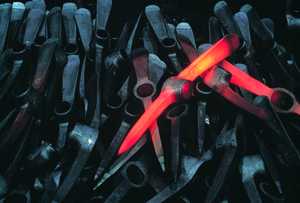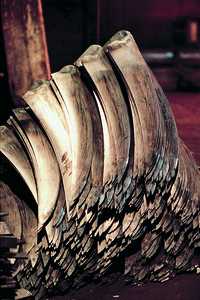gipuzkoakultura.net


gipuzkoakultura.net
2025ko abenduak 28, igandea


Patricio Echeverría, a native of Legazpi, began his working life as a metal worker in the small forges of the area. He soon became a master of the trade which he was later to practise on a much larger scale. In 1908 he founded his own tools factory under the name of Segura, Echeverría y Cía. The firm chiefly produced farm tools, as well as tools for mining, carpentry and quarrying. The extensive product range included hoes, grub hoes, scythes, garden rakes and forks, picks, mallets, levers, wedges, granulating hammers, and forging utensils in general.
The founders of the company were Pedro Segura, Romualdo Echeverría, Prudencia Guereta, and, of course, Patricio Echeverría himself. Business grew quickly, helped by the favourable economic situation of the industry in neutral countries during the First World War. After the war, Echeverría took the helm of the company on his own, and it became a regulated collective company. Eventually, in 1938, it became a joint stock company, operating under the name of Patricio Echeverría S.A.

Using these resources, Patricio Echeverría produced a its "Bellota" range: the brand was to become a byword for quality in agricultural tools, on both domestic and international markets. Surprisingly though it may seem now, although the company used the brand from an stage in its development, it was not the original owner, having acquired the name from the English firm of Henry Taylor in Sheffield (HERRERAS, ZALDUA 1997).

The days of the small workshop in the Urola valley were long over and a new industrial complex had been created which required a new and more complex organisation. At the beginning of the 1990s the firm's various industrial activities were split between different companies. The Corporación Patricio Echeverría S.A. was divided into Patricio Echeverría Aceros S.A., Patricio Echeverría Forja S.A., Bellota Herramientas S.A. and Inversiones S.A. In 1993 the Siderúrgico Vasco group was formed, in which the corporation has a 17% shareholding (HERRERAS, ZALDUA, 1997).
From a workforce of around a dozen in its initial years, Patricio Echeverría has grown to employ over three thousand people, including 85% of the entire workforce of Legazpi. Indeed, this nucleus in the Urola valley owes much of its present urban layout to the industrial giant. The factory facilities alone stretch for over two kilometres and numerous houses have grown up around them since the 1940s. The district of San Ignacio, with more than a hundred homes, was followed by Arantzazu and San José. The company's welfare policy also extends to education, and it has helped to finance the construction of a number of schools, including the Buen Pastor school for boys and the Santa Teresa school for girls. The Santa Cruz home for the sick and elderly, medical centres such as the dispensary for fighting tuberculosis and for diseases of the thorax, and the cooperative store are other examples of the prolific social work of Patricio Echeverría and the impact the company has had on the town.